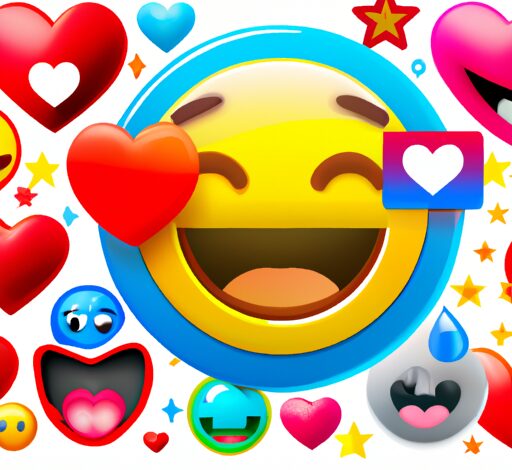Understanding the Meaning of the Heart Emoji

Introduction to Emoji Language
In recent years, the use of emojis has become increasingly popular in digital communication. Emojis are small pictograms used to express emotions, ideas, and concepts. They have become an essential part of modern communication, particularly in text messaging and social media platforms. The popularity of emojis has increased to the extent that they have been included in various forms of digital communication, including emails, websites, and even in business communication. Understanding the meaning of emojis has become critical in effective communication, especially across different cultures and languages. In this article, we will explore the meaning of one of the most popular emojis, the heart emoji.
The Heart Emoji: History and Evolution
The heart emoji is a small, red symbol of a heart shape. It was first introduced as part of Unicode 1.1 in 1993 and was originally designed for use in Japanese mobile phones. The heart emoji quickly became popular and was subsequently adopted by other platforms and countries.
Over the years, the heart emoji has evolved to include different colors, shapes, and styles. The first variations of the heart emoji were different colors, including blue, green, yellow, and purple. Later versions included different shapes, such as a broken heart and a heart with an arrow through it. In 2017, a new set of emojis was introduced, which included the gender-neutral version of the heart emoji.
Today, the heart emoji has become a ubiquitous symbol of love and affection, used not only in romantic contexts but also to express appreciation and gratitude towards friends and family. Understanding the different variations of the heart emoji and their meanings is essential in effective communication.
Interpretation of Different Colored Heart Emojis
The heart emoji is available in a range of colors, each with its own significance and interpretation. Here are some of the most common colored heart emojis and their meanings:
Red Heart: The classic red heart emoji is the most commonly used and signifies love, romance, and passion.
Pink Heart: The pink heart emoji is often used to express gratitude, appreciation, and affection towards friends and family.
Blue Heart: The blue heart emoji signifies trust, loyalty, and stability. It is often used between close friends and family members.
Purple Heart: The purple heart emoji is often used to express compassion and understanding towards someone.
Green Heart: The green heart emoji is associated with nature and is often used to express eco-friendliness, growth, and health.
Yellow Heart: The yellow heart emoji is often used to express friendship, happiness, and positivity.
Understanding the meaning behind the different colored heart emojis is essential in effective communication, particularly in expressing emotions in digital communication.
The Heart Emoji and Its Use in Social Media
The heart emoji has become a popular symbol on social media platforms, particularly on Instagram and Twitter. On Instagram, users can use the heart emoji to express their appreciation for a post or comment. The number of heart emojis used by users often signifies the level of appreciation they have for a post or comment.
On Twitter, the heart emoji is used to indicate liking a tweet. Twitter also has a feature that allows users to add a heart reaction to a direct message, similar to Facebook’s reaction feature.
In addition to expressing emotions and sentiments, the heart emoji has also been used to convey social and political messages. For example, during the Black Lives Matter movement, the black heart emoji was used to show solidarity with the cause. The rainbow heart emoji is also used to show support for the LGBTQ+ community.
Understanding the various ways in which the heart emoji is used on social media is essential in effective communication, particularly in the context of social and political movements.
The Heart Emoji in Cross-Cultural Communication
While the heart emoji is commonly used and understood in many cultures, it is essential to note that its meaning and interpretation may differ across different cultures and languages. For example, in some cultures, the color red is associated with luck, while in others, it is associated with danger and warning.
Understanding cultural differences in the interpretation of the heart emoji is essential in cross-cultural communication. Misunderstandings can arise if the meaning and interpretation of the heart emoji are not understood in the context of the receiver’s culture.
Additionally, it is essential to note that the use of emojis, including the heart emoji, may vary across different age groups, genders, and social backgrounds. It is crucial to consider the context of the conversation and the relationship between the sender and the receiver when using emojis in communication.
In conclusion, the heart emoji is a popular and widely used symbol of love and affection in digital communication. Understanding the meaning and interpretation of the heart emoji, including its variations in color and shape, is essential in effective communication, particularly in cross-cultural contexts.



